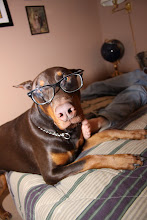The first time that I read the book "Personality Plus" by Florence Littauer I threw it across the room. The idea that this information has been around for well over two thousand years, and I was reading "Catcher in the Rye" in school instead of this information. If you have not studied the D.I.S.C. principle, or Hippocrates theory of the four temperaments. Your life will change dramatically once you do. Your marriage, your children, your business will all benefit greatly.
Other than "Personality Plus" which is Hippocrates theory, another excellent book is "Positive Personality Profiles" by Robert Rohm. Everyone will benefit by learning this information. Below is a quick overview, but I strongly recommend checking out those two books, you will be glad you did.
D.I.S.C.
A Quick Introduction
What DISC is.
· · DISC is the universal language of behavior, and emotions.
· · DISC categorizes how we act, (behavior.)
What DISC is NOT.
· · NOT a measurement of a person’s intelligence.
· · NOT an indicator of a person’s value.
· · NOT a measurement of skills and experience.
· · NOT a measurement of education and training.
It does allow you to move from the Golden Rule to the Platinum Rule. Instead of doing unto others as you would have them do unto you, Do unto others as they would have you do unto them.
In other words, speak their unspoken language.
When you understand DISC it will help you to not only know yourself better, but you will be able to identify your clients, and will be able to tailor your presentation to how they want to hear it.
D’s
Competitive,
Change Agent
Demanding
Decisive
Doer
Confrontational,
Direct,
Driver,
Results Oriented
Sense of Urgency
Change Agent
Demanding
Decisive
Doer
They are fast paced, extroverted, and task oriented. Very bottom line.
I’s
Inspirational,
Influencing,
Inducing,
Impressive,
Interactive,
Interesting,
Interested.
High verbal skills,
Projects self confidence,
Rather talk than listen,
They are fast paced, extroverted, and relationship or people oriented. They are all about the people, the happening.
S’s
Supportive,
Submissive,
Stable,
Steady,
Sentimental,
Shy,
Status-quo,
Specialist,
Dislikes confrontation,
Persistent,
Controls Emotion,
Adaptable,
Good Listener
They are slower paced, more introverted, very people and relationship oriented. Family and Friends are #1.
C’s
Cautious,
Competent,
Calculating,
Concerned,
Careful,
Contemplative,
Precise,
Accurate,
Concern for Quality,
Attention to Detail.
They are slower paced, more introverted, very task oriented.
Check out the pace of someone when they walk in to your model.
If they are walking fast, moving fast, odds are they are either a D or an I. Conversely if they are moving slower odds are either a C or S.
If they are very to the point asking fact finding questions, likely a D or C, if they are more friendly oriented people questions about you or whatever, odds are an S or I.
For more information quickly, a good book on the subject is
“ Positive Personality Profiles” by Dr. Robert Rohm.
Self Test, number each group of four from 1-4. 1 being least like you, 4 being most.
1. _________ Enthusiastic I
_________ Bold D
_________ Conscientious C
_________ Friendly S
2. ________ Logical C
________ Attractive I
________ Good Natured S
________ Outspoken D
3 _______ Agreeable S
_______ Outgoing I
_______ Daring D
_______ Careful C
4. ________ Strong-willed D
_______ Tactful C
_______ Sympathetic S
_______ Charming I
5. _______ Gentle S
______ Well- Disciplined C
______ Talkative I
_______ Pioneering D
6. ______ Competitive D
______ Even tempered S
______ Good mixer I
______ Thorough C
7. ______ Sociable I
______ Dominant D
______ Controlled C
______ Easygoing S
8. ______ Reserved C
______ Appealing I
______ Kind S
______ Direct D
9. _____ High-spirited I
_____ Amiable S
_____ Vigorous D
_____ Accurate C
10. ______ Restless D
______ Expressive I
______ Diplomatic C
______ Considerate S
Add the numbers of each letter DISC and place them on lines
D______, I________, S_________, C_________
Circle the letter with the highest point total, and put a check mark by the letter with the second highest total. The letter you circled is your primary DISC behavior, the check mark is your secondary.
Tuesday, February 2, 2010
Subscribe to:
Post Comments (Atom)

No comments:
Post a Comment